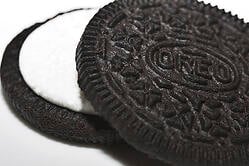Brand Engagement In The Social Media Age

What Matters Now Is Engagement
You might have noticed that things have changed in the last few years around the subject of branding. How you brand your business is no longer just a matter of some clever creative and timely ad placements. As an example, let's take the first step of the inbound marketing methodology - getting found by potential customers. These days, a business shows up in one of millions of results on a search engine results page. A building’s super swanky sign is just one of thousands of visual cues bombarding overstimulated passersby every day. And the promotional giveaway that once appealed to the masses is so passé. Now it looks like nothing more than a spammy banner ad.
Making a brand stand out is more challenging than ever.
Successfully managing your brand in the inbound age is about more than just connecting all the phases of the marketing funnel, and creating content that attracts and converts leads. It's about doing all of that, but with sis-boom-bah. Oh, and that sis-boom-bah has to be measurable, somehow.
Case in point: Oreo's Twitter Powered Vending Machine at SXSW. The vending machine allowed people to see what was popular on Twitter, and then translated that topic into a custom made Oreo. This video gives you the walkthrough:
What is a brand?
The best branding is a sweeter spot than the middle of an Oreo cookie. There are as many different definitions of branding as there are marketers to ask.
The American Marketing Association defines brand and branding this way: “A brand is a customer experience represented by a collection of images and ideas; often, it refers to a symbol such as a name, logo, slogan, and design scheme. Brand recognition and other reactions are created by the accumulation both directly relating to its use, and through commentary.”
This definition is care of the Canadian Marketing Association: "Branding is the strategic development and management of differentiation through a unique identity. A brand can be systematically managed with a well defined brand strategy which includes a clear statement (no more than two sentences) of the key brand benefit to target audiences followed by a few key support points or reasons to believe in the brand benefit. Branding involves not only the creation of a meaningful name but a differentiated symbol or word mark, which illustrates the brand personality."
It might behoove these organizations to modify their interpretations of branding to include the behavior of brands in the social media age. Brands can no longer simply exist, but they must continuously enact, engage and behave - in some social media channels - even like a person. Interpretations aside, you know a brand when you see one - and you know when one isn't working.
Building A Brand That Works (Literally)
World-renowned brands used to own the market, but social media has brought on a sea change. Today’s consumers have the opportunity to research brands spanning across the entire globe before they click to buy. It’s not just about which company has the coolest logo that determines best brand. The best brands do have the coolest logos and taglines, but they also have the most intuitive websites, the most engaging social media content, emails that speak directly to your needs, the information you're seeking posted right there for you on their blogs.
That’s branding in the social media age. What matters now is engagement. Does a brand attempt to connect with you personally? Does a brand create a memorable experience for you - memorable enough for you to tell others about? The answer would be yes for the folks who engaged with Oreo's Twitter Powered Vending Machine at SXSW. Unique and standout, right?
The brands that can execute all of these things for their buyer personas are the brands that people are willing to pay for, whether they’re located in your own neighbourhood, online or around the world.
Topics: Social Media, Branding, Advertising







